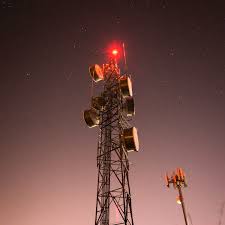 Jo Burzynska and Professor Anina Rich were interviewed about the Osmic Resonance project by Bec Dean for The Constellations podcast series. This episode of the series exploring art projects that operate at the intersections of science and technology can be accessed through the link above or on iTunes.
Jo Burzynska and Professor Anina Rich were interviewed about the Osmic Resonance project by Bec Dean for The Constellations podcast series. This episode of the series exploring art projects that operate at the intersections of science and technology can be accessed through the link above or on iTunes.
Category Archives: Multisensory
Oenosonic immersion at Pollinaria
Featured

Credit: Daniela d’Arielli / Pollinaria
For the last ten days I have undergone a sensory immersion in the winemaking process, as the resident artist at Pollinaria. An organic farm and arts research programme in rural Abruzzo, Italy, Pollinaria promotes a productive fusion of art and science, human life and the environment, and includes a number of vineyards, as well as its own winery. It was here, towards the end of the 2018 grape harvest, amongst Pollinaria’s vines and fermenting wines that my oenosonic encounters unfurled.
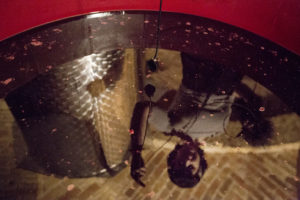
Credit: Daniela d’Arielli / Pollinaria
My work as a wine writer has obviously meant much time devoted to tasting wine; professionally this has been predominantly within a rational framework: applying the knowledge I’ve built up through two decades of study and experience, and making aesthetic and quality judgments. This role has also seen me spend a significant amount of time in vineyards and wineries, very often accompanied by commentary from and discussion with whoever is my guide. In these professional visits, affective responses can be reduced, sensorial experience subdued and correspondences overlooked in this clamour of the conceptual. In contrast, this residency was very much focused on connection with the senses: with my own, within the wine environments experienced and with each other.

Credit: Daniela d’Arielli / Pollinaria
As my primary mode of enquiry in this residency was the sensorial, I started with a sensory mapping of both Pollinaria’s home vineyard and winery, avoiding the visual, whose dominance can so often blind us to what’s going on in other sensory domains. Much of this simply involved being present in the environments to tune into and note sensations as they arose. Just as I sought to overcome ingrained intellectual approaches within my relationship to wine, I sought to bring fresh ears to the sonic environments which were at once familiar, but quickly offered up many sounds that I’d not attended to before.

Credit: Daniela d’Arielli / Pollinaria
In the recordings that I went on to make in next part of the project, I returned to Pollinaria’s home vineyard and its historic vaulted wine cellar; the oldest parts of the latter date from the 15th Century when it was a monastery, which has been revived in recent years by Poillanria director, Gaetano Carboni. I endeavoured to capture both the audible experiences I’d noticed, as well as uncovering sounds that I’d not been able to hear through using a selection of different microphones; such as ants moving and communicating in the soil under the vines and fermentation deep in the barrels and tanks. I also tasted the wines, endeavouring to move away from mediating my experience through the mental creation of a traditional tasting note, to something that more closely reflected the raw perceptual experience. Given my background, this proved the hardest task of all!
These recordings, mappings, and sensory research will go be used in the creation a new wine-focused multisensory work in the coming year, in which sensory interactions shift perceptions on what is tasted, smelled and heard.
About Pollinaria
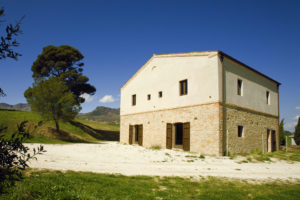 Pollinaria is unique residency programme, in being a working farm – growing the likes of grapes, olives and wheat organically – that offers artists the opportunity to interact with agriculture. This residency is not about an escape from city pressures to a rural idyll, but promotes a direct, creative engagement with the work of the countryside and its regeneration. With its own vineyards and now restored winery, Pollinaria seemed the perfect place for my creative research in the multisensory dimensions of wine. I was therefore extremely excited when I was invited by Gaetano Carboni to have a residency here in October 2018.
Pollinaria is unique residency programme, in being a working farm – growing the likes of grapes, olives and wheat organically – that offers artists the opportunity to interact with agriculture. This residency is not about an escape from city pressures to a rural idyll, but promotes a direct, creative engagement with the work of the countryside and its regeneration. With its own vineyards and now restored winery, Pollinaria seemed the perfect place for my creative research in the multisensory dimensions of wine. I was therefore extremely excited when I was invited by Gaetano Carboni to have a residency here in October 2018.
The removal of time pressures, combined with the complete understanding and support of Carboni as the vineyard and winery proprietor, was immensely valuable to this research and for the quality and diversity of recordings I was able to make. Much of my research was conducted in the Montepulciano vineyard close to the residency house, which I could walk over to in minutes at any time of the day (or night) that I chose. It was also an amazing experience working within its ancient wine cellar in the town of Loreto Aprutino, historically, aesthetically, acoustically and in terms of the taste I was given of first wines being made here.
Risonanze di Vino
Featured
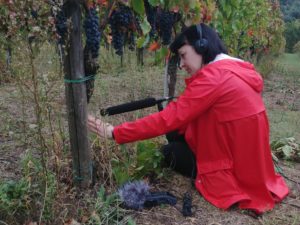 Montesarchio, Italy, October 2018
Montesarchio, Italy, October 2018
Risonanze di Vino was a residency project in which I explored the interactions between the sounds and wines, culture and senses in wine regions within Campania, Southern Italy. Curated by Leandro Pisano and supported by Nicola Carfora, this project sought to uncover resonances between the sensory and affective connections of local winegrowers – predominantly located in Sannio/Valle Caudina areas – and their wines and land. These responses helped guide the making of audio recordings in their vineyards and wineries, which were then used in the creation of site-specific soundscapes for one wine from each of the six producers visited.

Masseria Fratassi’s Pasquale Clemente up Mt Taburno
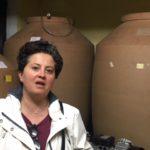
Cantine Giardino’s Daniela di Gruttola and her amphorae
Each soundscape aims to reflect the connections articulated by the maker of the selected wine through sounds of that wine’s sonic ‘terroir’, sourced from its place and production. The individual soundscape was also designed to harness perceptual correspondences between elements of the sounds recorded and the salient aroma and flavour characters of the individual wine, which is tasted as part of the work. The wine and sound combined offers a sensory transmission of the complex cultural and personal contexts of the wine’s making, heightened by the works’ crossmodal harmony.
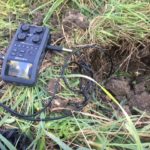
The works from Risonanze di Vino were premiered on 7 October, 2018 at Cristina Park Hotel, Montesarchio, Italy. The wines used were:
Masseria Parisi Resolje Moscato Spumante de Baselice NV
Masseria Fratassi SVG920 2017
Vallissasoli 33/33/33 2013
Fontanavecchia Libero Taburno Falaghina 2007
Cantina Giardino Bianco 2017
Cantine Tora “Spartiviento” Aglianico del Taburno Riserva 2011
Further and more detailed documentation may well be forthcoming!
Experimenting with sounds and aromas
Featured
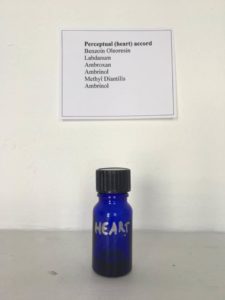 “But when from a long-distant past nothing subsists … the smell and taste of things remain poised a long time, like souls, ready to remind us, waiting and hoping for their moment, amid the ruins of all the rest; and bear unfaltering, in the tiny and almost impalpable drop of their essence, the vast structure of recollection.”
“But when from a long-distant past nothing subsists … the smell and taste of things remain poised a long time, like souls, ready to remind us, waiting and hoping for their moment, amid the ruins of all the rest; and bear unfaltering, in the tiny and almost impalpable drop of their essence, the vast structure of recollection.”
Marcel Proust, In Search of Lost Time
When the narrator of Proust’s novel, In Search of Lost Time bites into a madeleine cake, he is involuntarily transported back to a joyful moment, which he comes to identify as that of sharing the cake with his aunt as a child. This power of taste and smell to powerfully trigger memories and emotions – which has become known as the “Proust effect” after this passage – is likely due to the fact that unlike vision, sound or touch, our olfactory system is directly connected to the amygdala and hippocampus, areas of the brain involved in emotion and memory. These very personal experiences that can be conjured up by smell and taste are something of which anyone working with these senses must be mindful. As an artist using both, I was interested to know how this might influence correspondences with the other sense in my practice, audition.
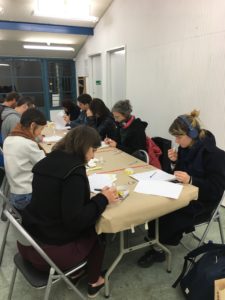 One of the central parts of my Culture at Work Art-Science residency was an audio-olfactory experiment in which I sought to identify correspondences between a selection of different sounds and aromas and gain insights into how these might be emotionally, conceptually or perceptually influenced. Past studies have identified sound-smell correspondences that people appear to share, and have started to examine what might be behind these. However, while the role of emotion has been explored and identified as one of the factors likely mediating audio-olfactory correspondences, no study to date has examined the personal associations and memories that may play a part in this. Given this gap, I was keen to incorporate this into my own research.
One of the central parts of my Culture at Work Art-Science residency was an audio-olfactory experiment in which I sought to identify correspondences between a selection of different sounds and aromas and gain insights into how these might be emotionally, conceptually or perceptually influenced. Past studies have identified sound-smell correspondences that people appear to share, and have started to examine what might be behind these. However, while the role of emotion has been explored and identified as one of the factors likely mediating audio-olfactory correspondences, no study to date has examined the personal associations and memories that may play a part in this. Given this gap, I was keen to incorporate this into my own research.
 Assisting me in the experimental design, was my residency science partner, the cognitive neuroscientist and specialist in sensory processing and synaesthesia, Associate Professor Anina Rich of Macquarie University, and her colleague Mem Mahmut, a psychologist specialising in olfaction. On 19th July, 14 participants progressed round my series of ten “smelling stations”, where they’d rate an unidentified aroma for a number of characters. These characters included personal preference and perceptual characters such as harshness/softness. They were also asked to guess what they thought the aroma might be and whether the aroma evoked any personal associations or memories. A similar set of questions was asked for the six sound/music samples that were played over the course of the experiment. Participants went on to rate the match of each of the ten aromas that they encountered with each of the sound samples, and select a sound frequency level on a tone generator that they felt best matched each aroma.
Assisting me in the experimental design, was my residency science partner, the cognitive neuroscientist and specialist in sensory processing and synaesthesia, Associate Professor Anina Rich of Macquarie University, and her colleague Mem Mahmut, a psychologist specialising in olfaction. On 19th July, 14 participants progressed round my series of ten “smelling stations”, where they’d rate an unidentified aroma for a number of characters. These characters included personal preference and perceptual characters such as harshness/softness. They were also asked to guess what they thought the aroma might be and whether the aroma evoked any personal associations or memories. A similar set of questions was asked for the six sound/music samples that were played over the course of the experiment. Participants went on to rate the match of each of the ten aromas that they encountered with each of the sound samples, and select a sound frequency level on a tone generator that they felt best matched each aroma.
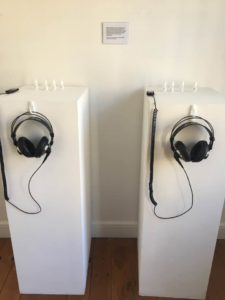
A taste of the experiment is available at the Osmic Resonance exhibition
The results provided some fascinating new insights into audio-olfactory correspondences, which I went to apply in the creation of my residency exhibition, Osmic Resonance. I will be discussing these, and how I integrated them into the work, in the Osmic Resonances and Sensory Correspondences Talk that I’m giving on Thursday 9thAugust, which Anina Rich will be illuminating with perspectives on sensory interaction from her perspective as a cognitive neuroscientist.
The research continues within the exhibition, as participants are invited to provide feedback on their experience of the Osmic Resonance installation itself.
Osmic Resonance
4-12 August, 2018 – 11am-4pm
Accellerator Gallery
Scott St, Pyrmont, Sydney
La Chevelure at reminiSCENT
Featured
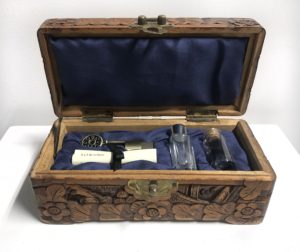
La Chevelure Boîte à Souvenirs
25 July to 11 August, 2018
May Space, Sydney
My audio-olfactory work, La Chevelure is part of reminiSCENT, an ambitious olfactory art exhibition curated by Megan Fizell at Sydney’s May Space, which surveys contemporary artists initiating multisensory experiences through olfactory encounters. As well as the 2016 audio-olfactory installation, this iteration includes La Chevelure Boîte à Souvenirs, a vintage hand-carved box containing a copy of the sound work, the scent and the Charles Baudelaire poem, La Chevelure.
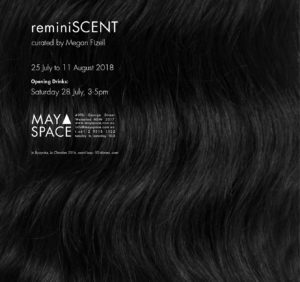
“…mon âme peut boire / À grands flots le parfum, le son et la couleur” – Baudelaire, La Chevelure.
La Chevelure is an exploratory, immersive audio-olfactory installation that charts a sensuous journey through the waves of ‘synesthetic symbolism’ in the Charles Baudelaire poem of the same name. In his poem from the mid-1800s, Baudelaire created a dense tangle of multisensory imagery to evoke the poem’s conceptual and emotional content using the central symbol of a lover’s head of hair. This wafts layers of exotic sensory symbolism through the poem’s inner and external worlds, much of which is evoked through scents and sounds. In this contemporary interpretation, the poem’s mental imagery, symbolism and conceptual elements are transposed to actual sounds and scents, and current understandings of crossmodal correspondences – the universal tendency of a sensory feature in one modality to be matched with one from another sensory modality – are applied and explored. Sensory interactions are harnessed to elicit states of mind, creating subconscious connections that provoke powerful conscious perceptual experiences.
